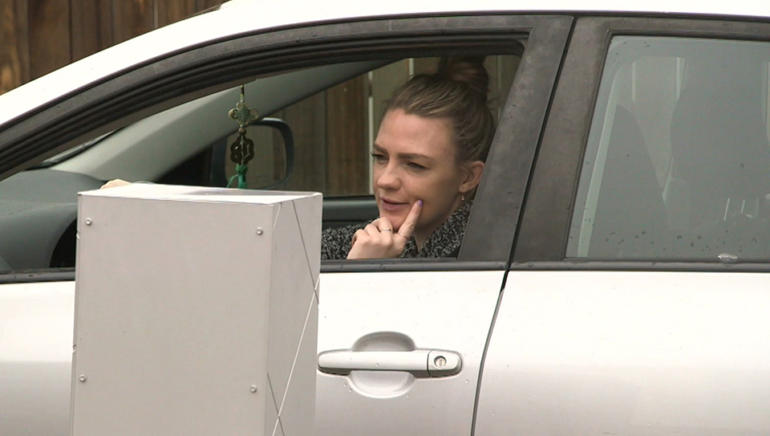For years now, Americans have relied on fast food, often delivered right to their cars, to fuel their busy lifestyles. Those quick-serve restaurants are not going away. But some of the workers they depend on are.
“There’s a massive need,” said Rob Carpenter, founder of Valyant AI, an artificial intelligence company in Denver. “In the United States right now, there’s a shortage of 800,000 positions within the fast food industry. Pretty much any restaurant you drive by has help wanted signs.”
Good Times Burgers, a Colorado-based fast food restaurant, has found a way to address the problem. An automated order taker at one of its stores has started handling drive-through traffic at breakfast.
CGTN’s Hendrik Sybrandy has more on how AI is finding a place in the service industry.
“We’re trying to be the absolute best company in the world for conversational AI ordering in fast food,” Carpenter said. His company is the creator of an AI system he claims is the first of its kind in the world. A pavement sensor recognizes a car pulling up and a robotic voice from a speaker greets the customer.
“The customer will say something like I want a cheeseburger,” Carpenter explained. “We grab that audio, we send it up to our AI algorithm which translates it to text… We then insert that cheeseburger into the point of sale system so that when someone pulls up they can pay.”
Employees can focus on filling the order. A third of their workload has been taken off their plate. It’s an example of how new technology could potentially transform the fast food industry, by reducing the pressure on workers and filling the labor gaps that exist right now. Some restaurants already use robots for some tasks. Self-service kiosks have popped up to help customers order. And the new web platform imPloie.com matches workers with open restaurant shifts.
“Technology, if we do it correctly especially, it could help enhance us and really free us from doing monotonous work to do more creative and how do we make this better and more efficient,” said Jose Estrella, imPloie’s CEO. “All of this emerging technology that we’re creating is giving us the tools of creation,” said Thomas Frey, a futurist and Executive Director of the DaVinci Institute in Westminster, Colorado. “It gives us the ability to create far more interesting new tools for doing things.”
Frey predicted it will take a while for AI to make a serious dent in the restaurant labor shortage. Carpenter pointed out that language-related bugs in the system are still being ironed out.
“We joke that it’s been frustrating because I want a burger, okay I’ve added a burger to your order seems really simple until you start digging under the surface and it’s extremely complicated,” Carpenter said.
But he said drive-through lane wait times have been cut 10-25 percent. Just two percent of all customers now ask to talk to a human. “As long as they get their food and it’s accurate they don’t really mind,” Carpenter said. He added that he expects the Good Times AI system to tackle lunch and dinner, in addition to breakfast, soon.
 CGTN America
CGTN America

